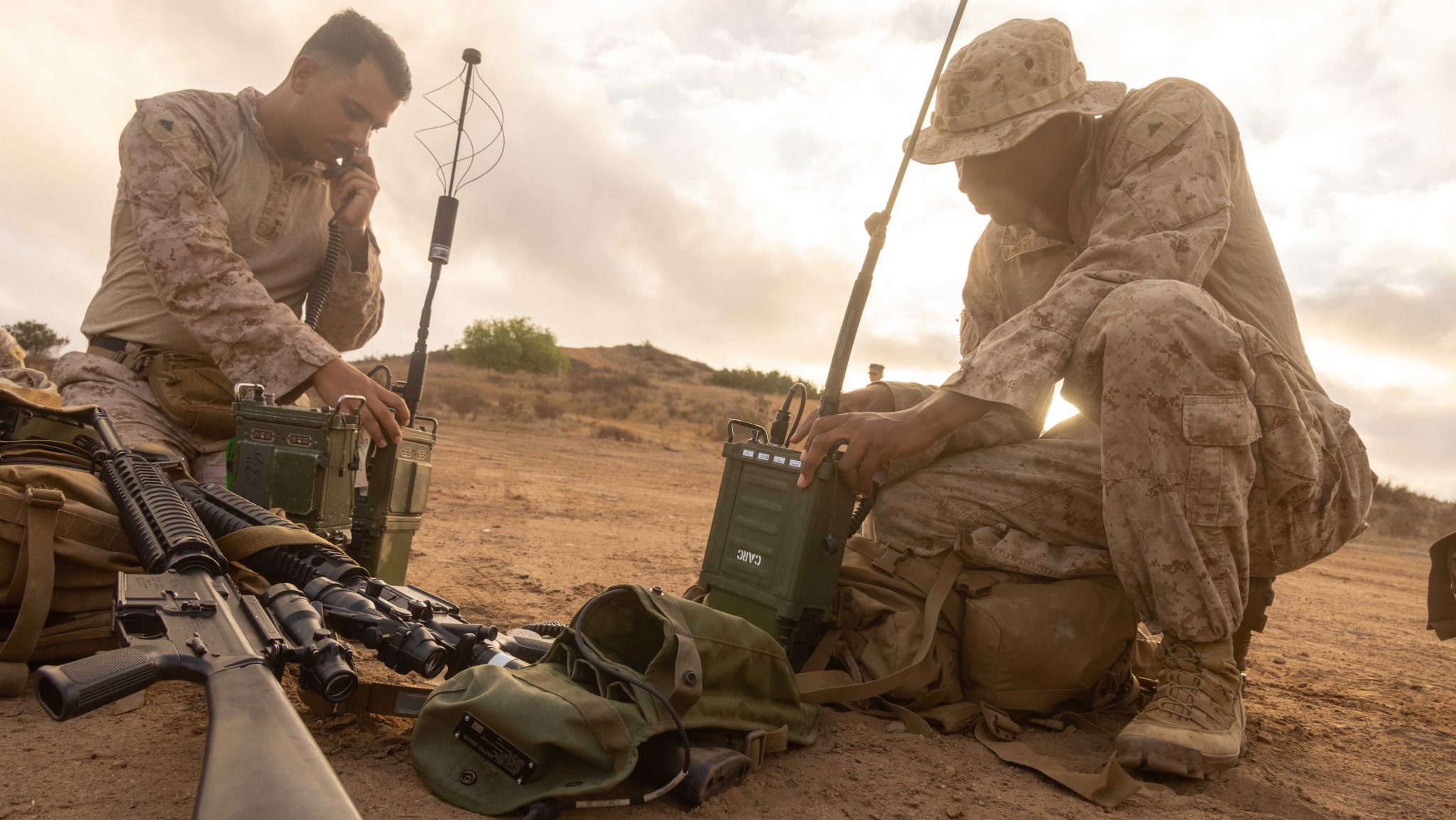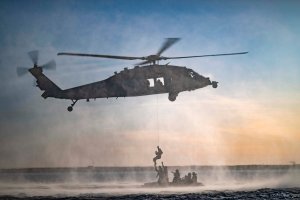
Marine Cpl. Steele Armstrong and Lance Cpl. Jaden Coleman set up a radio call during the Thunderstruck Communications Competition. Marine photo by Cpl. Renee Gray
A team of four Marines were caught in the middle of a six-mile track. They carried radios, and they knew there was no turning back.
But by the end of a first-of-its kind contest last month at Camp Pendleton, a team of communications specialists from the headquarters regiment of 1st Marine Logistics Group emerged from among 15 squads to win the inaugural Marine Corps-wide field communications competition.
They’d won — and been — Thunderstruck.
Specifically, the Thunderstruck Communications Team Competition, hosted by 3rd Marine Aircraft Wing, the first service-wide contest held specifically to test teams of Marines that run the radios, networks and ever-more-complicated communications gear carried by Marines in the field.
The competition was run by Marine Wing Communication Squadron 38 whose commander, Lt. Col. Brian Kerg, said in a release that the goal was to put Marines through realistic field conditions.
 Marines take off at the start of the inaugural Thunderstruck Communications Competition. Marine Corps photo by Lance Cpl. Fabian Ortiz
Marines take off at the start of the inaugural Thunderstruck Communications Competition. Marine Corps photo by Lance Cpl. Fabian Ortiz“Imagine a handful of Marines inserted via air and have to move the last tactical mile before they get C2 [command and control] established,” said Kerg. “They are supporting aviation operations and then they are detected. They have to break down their gear, move to another survivable location, and reestablish.”
Held in September, Thunderstruck sent teams on a six-mile timed march between skill stations, though officials did not clarify if the full-kit movement over the rugged Camp Pendleton terrain had the Marines ‘shakin’ at the knees.’ The teams moved between skill stations, some involving high tech communications gear, others traditional Marine field skills.
Teams programmed various types of tactical radios for line-of-site and satellite communications, plotted positions and targets on maps, and launched secure mobile data networks over field-hardende laptop computers that are at the heart of many modern battlefield tactics. They also faced stations testing basic weapons handling, including one in which they field-stripped various infantry weapons, including M249 and M16A4 rifles, and a grenade event.
Top Stories This Week
“This is my 15th year in communications field and there has not been a better time to be a communicator in the Marine Corps,” said Chief Warrant Officer 2 Kelson Epperson, a space and propagation engineering officer with MWCS-38. “We are now tactically integrated in every system, in every way, and Thunderstruck proves this.”
Competing teams came from all three Marine Expeditionary Forces, fleet and supporting units and reserve components.
“They were not only tested on our communications training and readiness standards, but tested while under physical duress and competitive pressure,” said Kerg. “As they would if rounds were flying at them. As they would if long-range munitions were falling on their head.”
“Today, I took away a very healthy spirit of competition with other communicators across the Marine Corps,” said Cpl. Tyler Barrack, a satellite transmissions systems operator and the fireteam leader for the winning team. “We are at an age where we are no longer operating in big teams or big boxes. Now we are going forward as fire teams operating with smaller teams.”

Task & Purpose Video
Each week on Tuesdays and Fridays our team will bring you analysis of military tech, tactics, and doctrine.

.jpeg)





















.jpeg)












 English (US) ·
English (US) ·